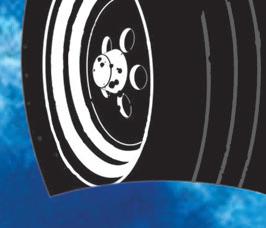































































































































































Vehicles are among the most costly expenses individuals have. According to data from Kelley Blue Book, the average price paid for a new vehicle in the United States in September 2022 was $48,094. Canadian car buyers face an equally expensive reality in their country, where the average MSRP for a new car is more than $45,000.







Since vehicles are such sizable investments, it behooves motorists to do as much as they can to keep their cars and trucks running smoothly. Vehicle owner’s
manuals typically recommend maintenance intervals and should be drivers’ first resource for information regarding how to take care of their cars and trucks. But the following are some standard maintenance intervals drivers can keep in mind.


3,000 miles
The 3,000mile marker used to be the benchmark for changing oil, but modern vehicles can now go longer between oil changes. However, it’s still a good idea to check other fluid

levels every 3,000 miles. Windshield washer fluid, coolant, brake fluid, transmission fluid, and power steering fluid should all be checked every 3,000 miles and topped off if levels are low.

It’s wise for drivers to perform some additional maintenance checkups every 3,000 miles. Check tire pressure, inspect hoses (which should not be leaking or bulging) and clean the interior of the vehicle every 3,000 miles.
5,000 miles
Many vehicle manufacturers now recommend oil changes every 5,000 miles. Tire rotations also can be part of service visits at this







interval, and drivers can ask their mechanic to check their fuel filters and batteries every 5,000 miles as well. Many may already do this as part of their comprehensive maintenance packages, but it’s still good to confirm if they do and request they do

so if it’s not part of the plan.
Drivers also can request that cabin air filters are inspected at this point, though they can generally last a year before they need to be replaced.
Around the 5,000mile mark, wiper blades also may begin to show signs of wear and tear, including streaking on the windshield or scratching noises when in use. Each of those signs indicates the wipers need to be replaced. However, drivers should take note of these signs regardless of when they appear. Some may not make it 5,000 miles before they begin to wear down. In such instances, they should be replaced immediately regardless of how many miles


it’s been since they were installed.
10,000 miles
Some vehicles may only require oil changes every 10,000 miles. That’s not uncommon in vehicles that use synthetic oil, though drivers are urged to consult their owner’s manuals. Brake pads also may need to be replaced around this time, and one telltale sign of that is a squeaking noise whenever the brakes are applied.




Drivers can ask their mechanics to check the alignment of their vehicles around this interval as well. Though many vehicles won’t develop alignment issues, it’s best to check for such issues every 10,000 miles or whenever a vehicle feels as though it’s pulling in one specific direction. Maintenance intervals are created to serve as a guideline for drivers. Any issues that arise should still be brought to the attention of a mechanic regardless of how many miles have been added to the odometer since the most recent trip to the garage.




Electric vehicles are widely touted as the vehicles of the future. Despite the growing availability of such cars in the present day, for many drivers EVs remain a novelty. That means buying an EV for the first time is a wholly new and unique experience.
Tesla EVs might be the most visible electric cars on the road today, but most major auto manufacturers, including Nissan and Chevrolet, produce EVs as well. That means auto buyers have more EV options now than ever before, which can make the process of buying such a car more exciting, but also more difficult. Narrowing down a growing number of options may not come easy to firsttime EV buyers, who can keep these tips in mind as they begin this exciting journey.
• Get an idea of the accessibility of charging stations around your home. The number of public charging stations is on the rise, but there’s still a lot of work to be done in this area. In fact, research from


McKinsey & Company indicates that nearly half of consumers in the United States indicate that battery or charging issues are their foremost concerns about buying EVs. The automotive resource Auto Trader notes that most EVs have enough battery range to cover more than the average daily commute in America. But








drivers who hope to use their EVs as their everyday cars that take them to work and help them run errands and get around town should
confirm there are enough public charging stations to make that possible.







• Look into subsidies. The Office of Energy Efficiency


















& Renewable Energy notes that allelectric and plugin hybrid cars purchased new in or after 2010 may eligible for a federal income tax credit that could be as high as $7,500. State and/or local incentives also may apply.
The Canadian Automobile Association reports that the Government of Canada offers pointofsale incentives of as much as $5,000 for drivers who buy or lease an EV. These subsidies can help bring the cost of EV ownership down by a significant amount and are worth exploring as drivers decide which electric car or truck to buy.





• Consider your parking situation. Homeowners who own singlefamily homes with a garage that can accommodate at least one vehicle can easily charge their EVs so long as they clear space in the garage


where the car can be parked. Auto Trader notes that some garages may need to be upgraded with a level two charger, and that can be expensive. Drivers who must park their EVs outdoors overnight should know that this, too, may require some additional funds for electric vehicle service equipment (EVSE). Local building codes may govern the installation of such equipment, which is best performed by an electrician. These are some additional costs of EV ownership that firsttime buyers must consider and research before they switch to an electric car or truck.
EVs may become the new normal over the next several decades. But before that day arrives, firsttime EV buyers must consider a host of factors as they shop around for an electric car or truck.
Family owned & operated for over 30 years. Offering complete auto repair and maintenance services in Lititz and surrounding areas.



















Driving puts a certain measure of wear and tear on a vehicle. Whether a vehicle is used primarily for commuting or as a vessel to take travelers to parts unknown, wear and tear is inevitable. On the opposite end of the spectrum, individuals may not realize that failing to drive their vehicles regularly also can affect performance. Here’s a closer look at what can happen when vehicles sit idle for lengthy periods of time.
• Battery loses its charge. The battery in a vehicle is still being used even if the car isn’t running. Batteries power various components in a car, such as the vehicle computer, phone chargers and more. If the engine does not turn over and help to recharge the battery, the battery will eventually die. People who drive infrequently may want to consider a trickle charger that’s plugged in during periods of nonuse.
• Tire rot can set in. Dry tire rot is deterioration that sets into the rubber. The material dries out and becomes brittle, causing splits and cracks to form. Driving with tire rot can cause tires to deflate.
• Rust and corrosion can occur. There is still plenty of metal in modern vehicles. A vehicle that has been exposed to salt or rain or one that is stored in a moist climate can be susceptible to undercarriage or engine rust. This may cause damage




that’s not easily repaired.


• Damage from sap or droppings. A vehicle parked in one location for a long time could be a target for bird droppings, fallen berries, sap, and other substances that are potentially harmful to the paint job. Leaving the car or truck out in the sun also means UV rays can cause clear coat over the paint to oxidize and begin


to fail, which can produce blotchy or peeling spots.
• Poor brake performance. When vehicles are left to sit, corrosion could build up on the rotors and the brake pads may become less flexible. Moisture also may seep into brake lines, causing issues with pressurization of brake fluid. Each of these factors adds up to brakes that do not work properly — which is a







big safety hazard.


• Formation of tire flat spots. When tires are not used frequently, the weight of the car can continually put pressure on the same parts of the tires, leading to flat spots. Tires also can lose pressure.


• Oil and other fluids may lose efficacy. Various fluids can go stale in a vehicle if it isn’t regularly driven. Gasoline also may develop condensation, which can reduce efficiency and performance. Taking short trips helps avoid this issue. Infrequent driving can cause damage to a car or truck. But many potential issues can be avoided by driving vehicles more often.




Anything that takes a driver’s attention away from the road is considered a distraction. That includes adjusting the radio station, looking ahead at the route on a navigation system, reaching into the fastfood bag for a French fry, and answering a phone or responding to a text. Distractions can be visual (taking eyes off the road), manual (taking hands off the wheel), and cognitive (taking your mind off driving).
Whether it is good for people or not, multitasking is now commonplace. That




















means individuals are juggling two or more different tasks at one time, even while driving. This propensity to try to fit more into a day may seem like it is improving efficiency, but certain studies show that multitasking often means the focus and attention to detail supplied to tasks isn’t as great when doing two things at once as opposed to focusing on one task at a time.
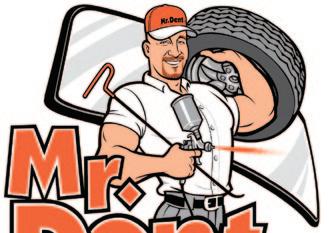
In terms of driving while distracted by something else, the consequences can be great. The National Highway Traffic Safety Administration says about 3,000 Americans die in crashes involving a distracted driver every year. Younger drivers, or those




between the ages of 15 and 20, are more likely to become distracted drivers than other age groups. The Canadian Automobile Association says drivers who drive distracted are eight times more likely to be in a crash or nearcrash event compared with nondistracted drivers. Transport Canada’s National Collision Database indicates distracted driving contributes to an estimated 21 percent of fatal collisions each year and around 27 percent of serious injury collisions.









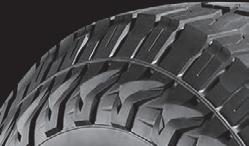
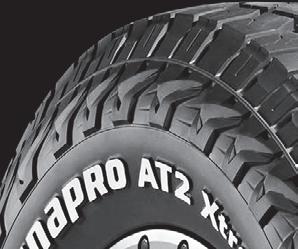








There is still work to be done to encourage drivers to be more attentive behind the wheel.





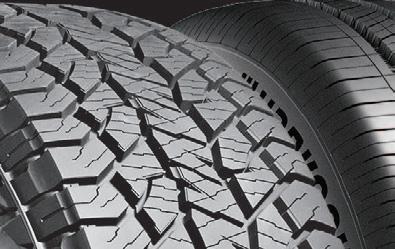
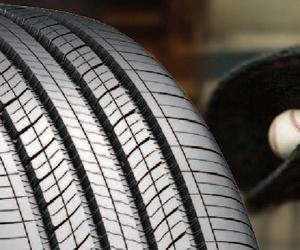


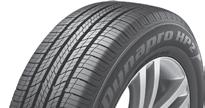










Drivers in the market for a new or preowned vehicle over the last couple of years likely discovered that the process of buying a car or truck is as difficult as ever.


Prior to and during the COVID19 pandemic, factory closures, supply chain issues, semiconductor chip shortages, and a bevy of other complications led to fewer vehicles on lots and much higher sticker prices on cars that were on the lot. That has caused people who are on strict budgets to reevaluate priorities and timelines.
According to Ivan Drury, Edmunds’ senior manager of insights, consumers can’t






expect to walk into the dealership thinking they’re going to find incentives or bargains right now. Plus, they may not even be able to see or test drive a vehicle they want. That reality makes now a great time for car shoppers to rethink their buying strategies.
Choose a Different Vehicle Class Tyson Jominy, Vice President of Data and Analytics at J.D. Power, says vehicle inventory in November 2021 reached record lows. Although there has been some improvement in 2022, consumers may still have to make some concessions if they need a



vehicle promptly. SUVs and pickup trucks have been some of the hardest inventory to find. Considering a sedan or even a compact car may be the only way to get a new car quickly.

Wait it Out
Those with the luxury of time may continue to wait for inventory to increase and prices to decrease. Tech experts, including Intel CEO Pat Gelsinger, expect chip shortages to persist into 2024. If a person’s vehicle is in good condition, it may be more economical to hold on to it a little longer and do the maintenance required.

Seek Out



It may take some investigation, but there are certain dealerships that are not adding astronomical markups, also called “market adjustments,” to the costs of their vehicles. These dealers


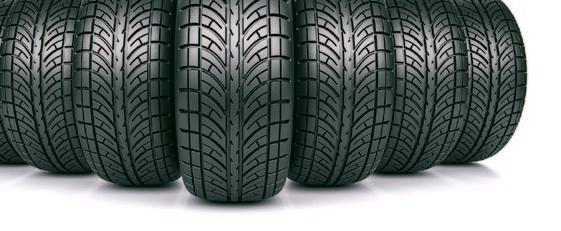




may advertise online, and car buyers can always call ahead to ask about markups.



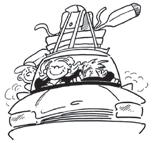







Take
Lots filled with a variety of makes, models, colors, and features are no longer the norm. Shoppers will be afforded more flexibility in price if they’re willing to take what’s available.
Check with Different Lenders

The Federal Reserve increased interest rates in the middle of 2022 and it initially planned to increase rates a few more times throughout the year. People, particularly those who do not have the best credit, can do themselves a favor and shop around at different banks for the best loan rates — the loan may be less costly than what’s offered through the dealership. Also, certified preowned vehicles tend to come with promotional interest rates that are lower than the average APR, which makes them a viable alternative.
Vehicles are still expensive and in short supply, necessitating changes to how people buy their cars or trucks.

Automotive problems are often best left to professionals. Though seasoned car enthusiasts may be capable of diagnosing and fixing car troubles without the assistance of a trusted mechanic, most drivers are better off letting the pros address issues under the hood.


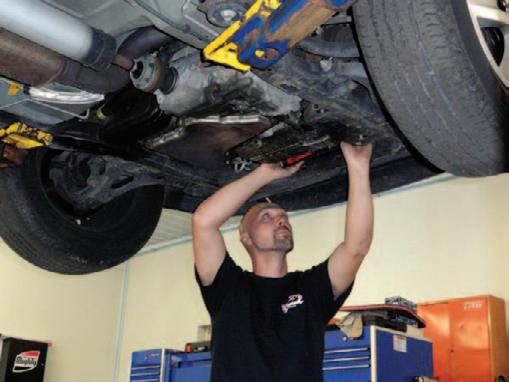



But drivers can still play a vital role in vehicle maintenance. Learning to recognize warning signs of various problems that can affect cars can prevent breakdowns and potentially costly repairs. And in certain instances, such as when the brake system is not working properly, knowing how to spot problems before they escalate into something larger can make drivers and their passengers safer and potentially prevent accidents.
Television shows and movies have lent credence to the notion that brake problems are marked by the sudden cessation of a vehicle’s ability to stop. Though that can happen, warning signs of fading brake systems tend to be more subtle.
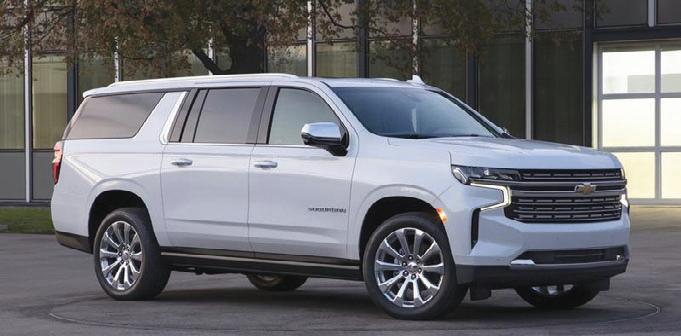
• Noises: Much like a knocking sound typically indicates a problem with a vehicle’s airfuel ration mixture, certain noises also
suggest there are problems with the brakes. The most noticeable such sign is a highpitched squeal that occurs when drivers apply the brakes. But grinding sounds and noises like scratching and scraping also warrant a visit to a brake specialist.




• Increase in stopping distance: An increase in the distance a vehicle travels before it stops after the

brakes are applied indicates that there’s an issue with the brakes. This issue may or may not require a brake replacement. In fact, it’s sometimes indicative that brake fluid levels are low, which can be remedied quickly and easily. However, an increase in stopping distance is significant enough that it should be brought to the attention of a brake specialist immediately.

• Pulling upon stopping: Another warning sign of brake problems is when the vehicle noticeably pulls to one side as it comes to a stop. This indicates that one side of the brakes is malfunctioning while the other is working properly. Like other issues with brakes, this one requires immediate attention from an automotive professional.
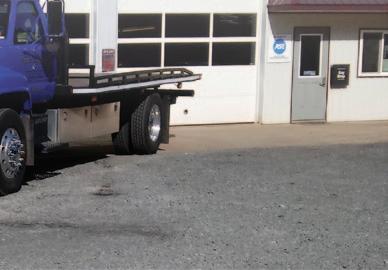
Brake systems should be inspected during routine maintenance visits. But issues with brakes can arise even after such inspections, which underscores how important it is that drivers learn to recognize the warning signs of brake problems.

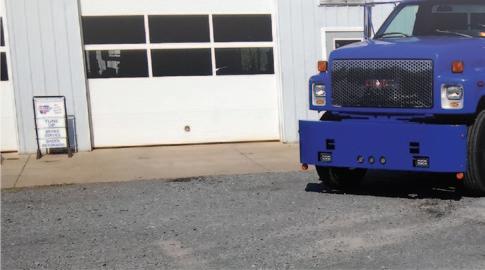


At the beginning of the COVID19 pandemic, news about the automotive industry focused largely on how consumers were not buying new cars and demand was way down, largely due to people staying home. However, over time, the big news on the automobile front was how semiconductor chip shortages were halting production lines and leading to unprecedented supply shortages — despite record demand. Semiconductor chips are found in laptops and other electronics, including vehicles. These industries have had to cut back on the number of items they
produce as a result. In June 2022, Toyota announced it would be cutting its production quota in July by 50,000 units. Intel CEO Pat Gelsinger now expects the semiconductor industry to be impacted by shortages until 2024 due to a lack of manufacturing equipment. Other factors affecting chip production are limited access to purified neon gas, as Ukraine supplies 25 to 35 percent of this gas, as well as a lack of palladium, which is largely supplied by Russia. In addition, air transport costs continue to go up. Semiconductor chips control functions of touchscreens, braking systems, backup cameras, and even airbag deployment systems. Automobiles may even have chips in engines.


















































